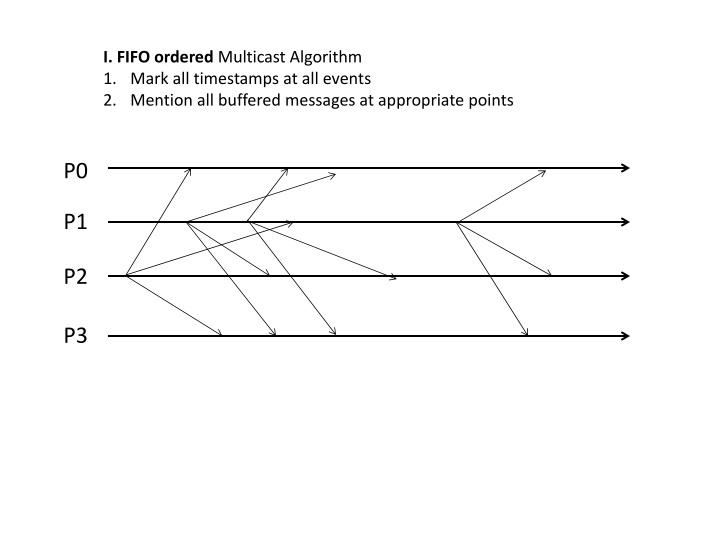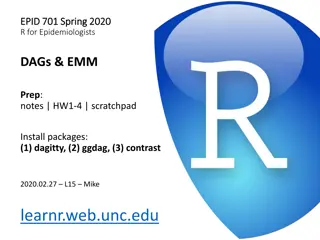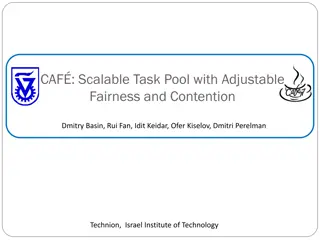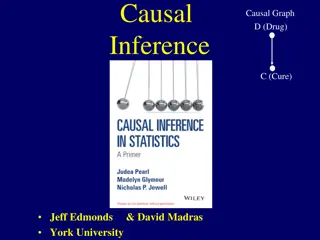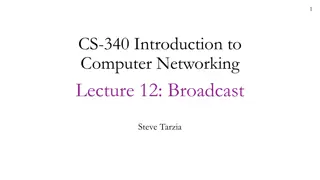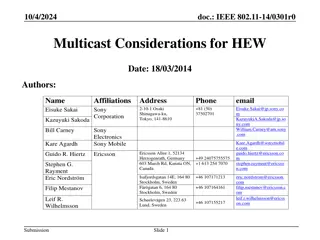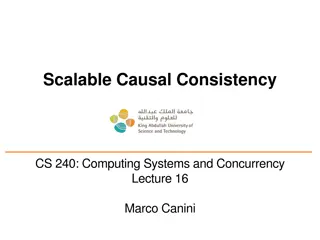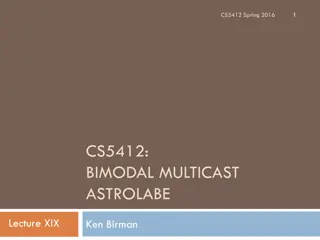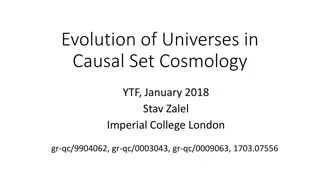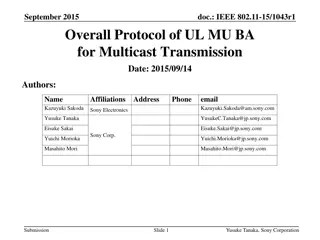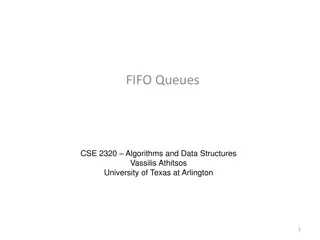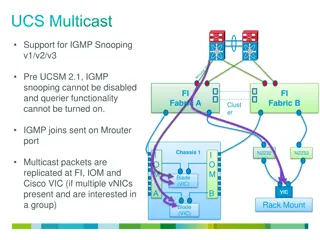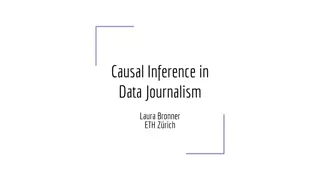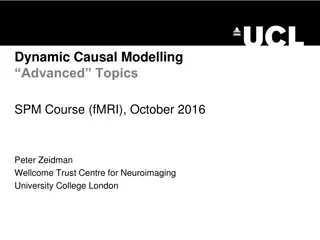FIFO, Causal, and Totally Ordered Multicast Algorithms
These images depict various multicast algorithms - FIFO ordered, causally ordered, and totally ordered using a sequencer. Each algorithm marks timestamps at all events and mentions buffered messages at appropriate points. Explore the mechanisms behind each method to understand how messages are managed and ordered in a distributed system.
Download Presentation

Please find below an Image/Link to download the presentation.
The content on the website is provided AS IS for your information and personal use only. It may not be sold, licensed, or shared on other websites without obtaining consent from the author.If you encounter any issues during the download, it is possible that the publisher has removed the file from their server.
You are allowed to download the files provided on this website for personal or commercial use, subject to the condition that they are used lawfully. All files are the property of their respective owners.
The content on the website is provided AS IS for your information and personal use only. It may not be sold, licensed, or shared on other websites without obtaining consent from the author.
E N D
Presentation Transcript
I. FIFOordered Multicast Algorithm 1. Mark all timestamps at all events 2. Mention all buffered messages at appropriate points P0 P1 P2 P3
II. Causally ordered Multicast Algorithm 1. Mark all timestamps at all events 2. Mention all buffered messages at appropriate points P0 P1 P2 P3
III. Totally ordered Multicast Algorithm using a sequencer. You can assume that the sequencer receives the multicast instantaneously after the multicast is sent. 1. Mark all timestamps at all events 2. Mention all buffered messages at appropriate points P0 P1 P2 P3
IV. FIFOordered Multicast Algorithm 1. Mark all timestamps at all events 2. Mention all buffered messages at appropriate points P0 P1 P2 P3
V. Causally ordered Multicast Algorithm 1. Mark all timestamps at all events 2. Mention all buffered messages at appropriate points P0 P1 P2 P3
VI. Totally ordered Multicast Algorithm using a sequencer. You can assume that the sequencer receives the multicast instantaneously after the multicast is sent. 1. Mark all timestamps at all events 2. Mention all buffered messages at appropriate points P0 P1 P2 P3
